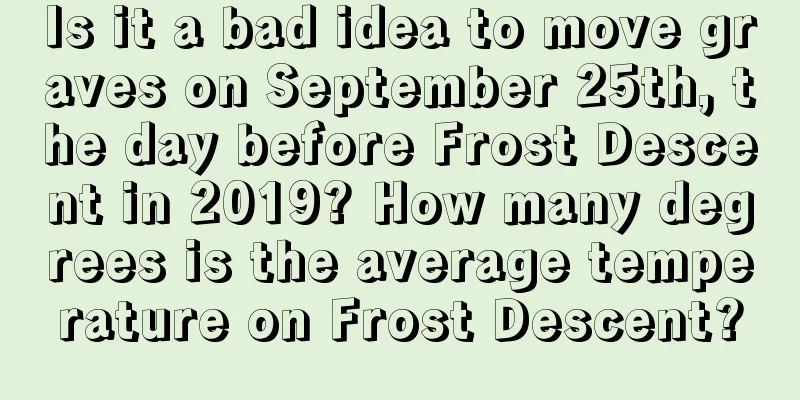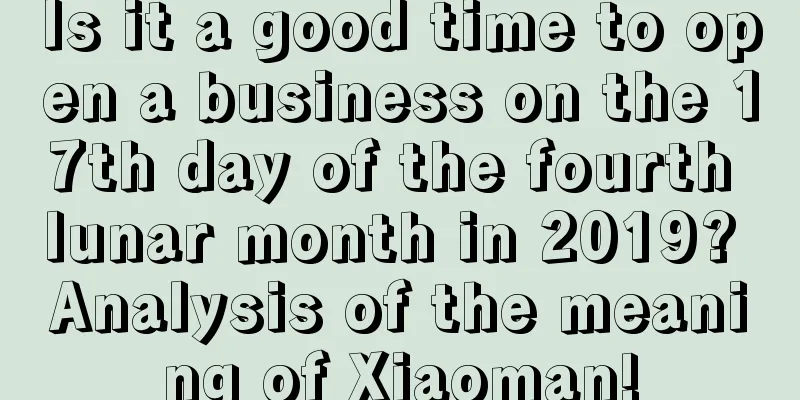How do we check the Feng Shui compass?

Introduction: We often see Feng Shui masters holding compasses, which are covered with layers of articles and numbers. This is a tool specifically used to survey Feng Shui! So how do we check the Feng Shui compass tool surface? Let’s follow the editor to learn more about it below! If you want to know more articles and content related to the compass, please quickly enter the other compass-related article topics that Mr. Shui Mo has carefully prepared for you. Everything you want to know is there! The compass is the most important practical tool in Chinese Feng Shui culture. The compass has many layers and its contents are complicated and profound, including the Five Elements and Eight Trigrams, the Heavenly Stems and Earthly Branches, the solar terms and directions, and the astronomical calendar.Let's introduce the knowledge of compass from the inside out.The first layer is Tianchi (i.e. Tai Chi), the center of the disk. The magnetic needle should be centered, with the black head pointing north and the red head pointing south. In Feng Shui theory, Tianchi and Jinzhen are very important. Establishing rules, weights and angles, and forming shapes are all determined by them. Jinzhen is divided into two symbols in the middle of Zi and Wu. The two symbols combined into four images. The four images give birth to eight trigrams, and the eight trigrams determine the directions. Thus, the way of heaven is completed, the way of earth is flat, and the way of man is established.The second layer is the innate Bagua plate. The Eight Trigrams are summed up by humans in their symbiosis with nature. The third level is the Nine Star Plate of Mother Earth. There are two theories about the Nine Stars: one is represented by what was said in "Hanlong Jing" by Yang Yunsong in the Tang Dynasty, and their names are Tanlang, Ju Men, Lu Cun, Wenqu, Lian Zhen, Po Jun, Zuo Fu and You Bi; the other is represented by what was said in "Nine Star Transformation" by Liao Yu in the Song Dynasty, and their names are Sun, Mercury, Jupiter, Tiancai, Tiangang, Gu Yao, Zao Huo and Sweeping Star. The fourth level is the twenty-four-day star plate. There are twenty-four celestial stars, namely Tianhuang, Tianwei, Tiankui, Tianyi, Shaowei, Tianhuang, Tianguan, Tianyue, Tianchang, Nanji, Tianma, Taiwei, Tianping, Taiyi, Tiangang, Tianguan, Tianheng, Tianyuan, Tianwu, Tianshi, Tianchu, Tianhan, Tianlei and Tianpu. The fifth layer of land is oriented towards the twenty-four mountains. The twenty-four mountains are also known as the twenty-four directions. This is the inner plate, also known as the main needle. The twenty-four positions correspond to the twenty-four solar terms in the sky and the twenty-four directions on the earth. Their arrangement order is: due north Kan hexagram Ren, Zi, and Gui, northeast Gen hexagram Chou, Gen, and Yin, due east Zhen hexagram Jia, Mao, and Yi, southeast Xun hexagram Chen, Xun, and Si, due south Li hexagram Bing, Wu, and Ding, southwest Kun hexagram Wei, Kun, and Shen, due west Dui hexagram Geng, You, and Xin, and northwest Qian hexagram Xu, Gan, and Hai. In Feng Shui, twenty-four is used to determine the direction of mountains and water. The sixth level is the twenty-four solar terms. The beginning of spring begins with Gen and the end of Great Cold is Chou. One can calculate the five elements of gold, wood, water, fire and earth to observe Shaoyin, Shaoyang, Taiyin and Taiyang. The seventh level has seventy-two dragons that penetrate the mountains. The Feng Shui compass is distributed in twenty-four positions, and the third position is divided into three dragons and twelve branches. For example, the corresponding positions to the Hai position are Ding Hai, Si Hai, and Xin Hai; the corresponding positions to the Zi position are Bing Zi, Wu Zi, Geng Zi, and so on. To penetrate the mountain is to determine the dragon. Only after figuring out which stem and branch the dragon belongs to can we distinguish good from bad luck. There are one hundred and twenty dragons on the eighth floor. Under the twenty-four mountains of the main needle, five positions are set up for each mountain, totaling one hundred and twenty, to avoid lonely and empty tortoise shells. The ninth level has twenty-four mountains on the human plate. It is also called the center needle human plate. The Zi and Wu points to between the Ren Zi and Bing Wu of the inner plate, halfway to the right of the twenty-four mountain directions, pointing to the North Pole Zi and Wu. Feng Shui experts all believe that the center needle is related to the stars on the upper part to determine the progress of qi and energy, and is related to the mountains, rivers and land veins on the lower part. There are one hundred and twenty dragon needles in the human plate on the tenth level. This is the same as the eighth floor, but it needs to be observed from a different angle. On the eleventh floor, sixty dragons are coiled through the ground. "Penetrating the earth" is relative to "penetrating the mountain", and means guiding the dragon energy into the coffin through the stems and branches, which is called "Tianji". It specifically discusses the positioning of the needle at the Shuyan point after the acupoint star descends into the meridian. A pressure plate is placed at the entrance to determine the entrance of the incoming meridian, and which stem and branch the Shuyan point belongs to. The twelfth floor is worth 240 points of gold plate. This is the division of the intensity, thickness, or strength and weakness of the qi of the twelve branches of the positive needle, and is used in conjunction with the sixty dragons that penetrate the ground to interpret good and bad luck. The thirteenth layer, the twelfth plate. The names of the twelve times are as follows: Xingji, Xuanxiao, Zhuizi, Jianglou, Daliang, Shichen, Queshou, Quehuo, Quewei, Shouxing, Dahuo and Ximu. The twelve signs indicate the position of the sun throughout the year, explaining the changes in the solar terms and the position and year of Jupiter's annual movement. The fourteenth layer of the Feng Shui compass is divided into twelve divisions. Fenye is an important concept in ancient astrology. People corresponded the stars in the sky with a certain area on the earth. The division of the area corresponding to the stars in the sky is called fenye. The fifteenth layer of the sky plate has twenty-four mountains. It is an outer-disc sewing needle, used by geographers to collect water. Used to judge the water flow pattern, it is believed that water coming into the prosperous position is auspicious, while water leaving the position is inauspicious, while water leaving the position is auspicious. The sixteenth layer of the sky plate has one hundred and twenty dragon sewing needles. This is the principle of selecting gold, which is the same as the 72 dragons, all using the theory of loneliness, prosperity, and tortoise shell emptiness. The seventeenth layer expands and contracts with sixty dragons. The Waxing and Shrinking Sixty Dragons is a plate for discussing weather conditions, designed specifically for riding the energy of the air. This plate was established by modern geomancers. The eighteenth layer is the five elements of the Hun Tian Xing degree. The Hun Tian star degree refers to the degree of the celestial sphere, which has a total of 365.25 degrees, belonging to the twenty-eight constellations, corresponding to the 365 days in a year. The Hun Tian star degree is artificially matched with the five elements, which is the Hun Tian star degree five elements. The nineteenth layer is the boundary of the twenty-eight constellations. The first part of the nineteenth layer is the division of the twenty-eight constellations; the second part of the nineteenth layer is the five elements of the twenty-eight constellations; the third part of the nineteenth layer is the boundaries of the twenty-eight constellations. Summary: The above is the analysis of the knowledge content on the compass! You can refer to it for reference. I hope this article can help compass enthusiasts! |
>>: Don’t know how to place the fish tank according to Feng Shui? Just master these six elements!
Recommend
What is the position of the God of Wealth on the second day of the fourth lunar month in 2022? What is the position of the God of Wealth today?
The fourth month of the lunar calendar is the firs...
2017 Lunar November 11th Hour Lucky and Unlucky ...
In the eleventh month of the lunar calendar, whet...
What are the auspicious and taboo things in the lunar calendar for February 13, 2020?
In the second month of the lunar calendar, the sp...
Which day is best for moving house in April of the lunar calendar in 2022? How to choose an auspicious day for moving?
The fourth month of the lunar calendar is a relati...
Can I set up my bed on the 30th day of the first lunar month in 2022? What are the Feng Shui taboos when placing a bed?
The first month of the lunar calendar has arrived ...
How can Feng Shui compass enhance personal fortune in 2017?
Introduction: In Feng Shui, the Feng Shui compass ...
Is it good to be born in the Year of Horse on Dragon Boat Festival? What is their fate?
There are 365 days in a year and there are also ma...
What is the meaning of Xiaoman? What is the time of Xiaoman on the day of the Xiaoman solar term in 2020?
Grain Full is the second solar term in summer. Wha...
Is it suitable to go out on October 13th of the lunar calendar in 2020? Is it an auspicious day?
Is it suitable to go out on October 13th of the lu...
Can I set up the bed on the tenth day of the tenth lunar month in 2021? Is the bed set up okay?
You also need to choose a time to set up the bed. ...
Is it good for a girl to be born on December 11, 2019? What is her personality and destiny?
Girls are the apple of every parent's eye. Gir...
Is the third day of the first lunar month in 2021 suitable for marriage? What are the auspicious days for marriage in the first lunar month of 2021?
Introduction: It is generally necessary to choose ...
Is Grain in Ear a spring solar term? What legends are there about it?
Introduction: Grain in Ear is one of the 24 solar ...
What day is May 25th in the lunar calendar 2020?
What day is May 25th in the lunar calendar 2020? ...
A review of customs on the fifth day of the first lunar month: What are the customs on the fifth day of the first lunar month?
Introduction: Chinese New Year is the most importa...









